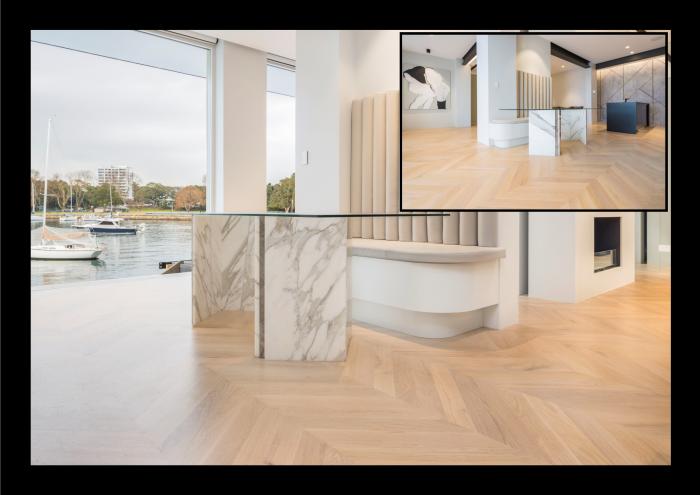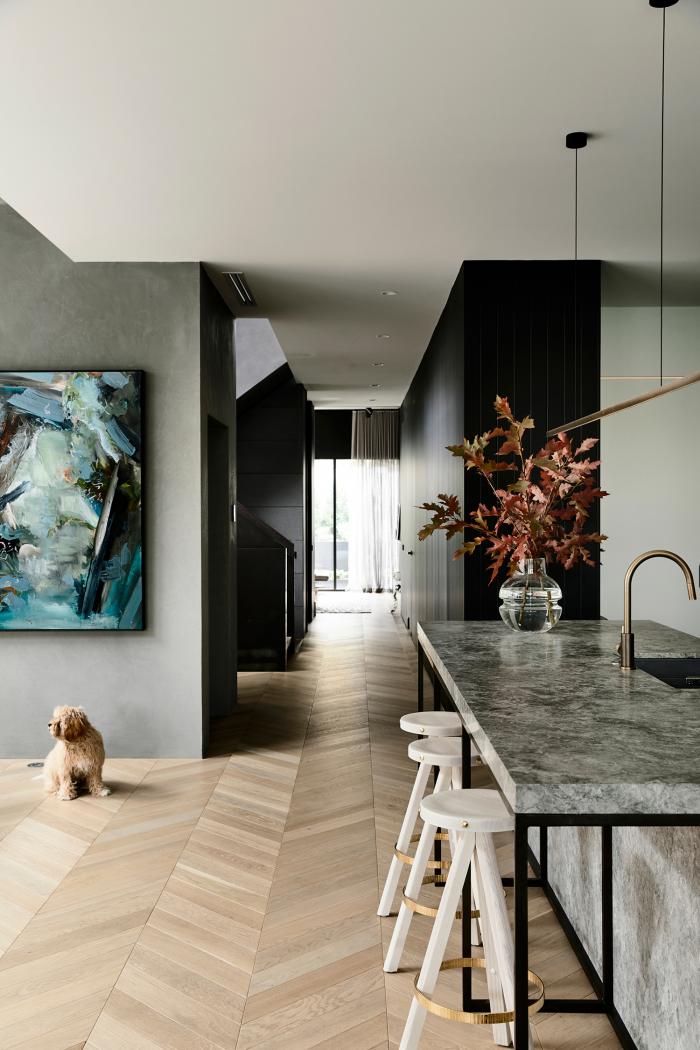
Pic: Mint Floors and Shutters
The Australasian Timber Flooring Association (AFTA) has outlined how a range of timber flooring products measure in terms of lifecycle and environmental credentials.
AFTA chief executive Randy Flierman says that timber is a flooring choice that is long-lasting, timeless and sustainable.
Timber needs to have been harvested responsibly in order to be considered sustainable. There are Australian and international standards around harvesting timber, with major production forests ensuring that timber is harvested in a rotation which means there are always new trees being grown.
When considering sustainability and benefit to the environment, traditional solid timber flooring (including solid parquetry) is king. This is because all solid timber flooring stores carbon, which contributes to offsetting the carbon dioxide emissions, and this in turn helps reduce the effects of climate change.
Solid timber floors are also made to be refurbished many times during their life, whereas most other flooring products will need to be replaced when they age and become worn. When you sand solid timber flooring back to bare timber and recoat them, the floor comes back to near new condition.
Solid timber flooring is known to add up to 3% to the value of your home. Therefore, whilst the initial costs may be higher, this is recouped when the house is sold.

Pic: Profile Timber Floors
Alternatively, engineered flooring is generally made up of layers of timber that are glued together. These products can be either fixed to the subfloor or they can be floated on an underlay, and they are generally pre-finished, so no site sanding and coating is needed, making it a more convenient and time effective option. Only the decorative layer is of high value timber, which enables our high value slower growing timbers to cover a greater area on the floor.
Laminate flooring resembles timber boards, and often has a textured surface to replicate the appearance of solid timber boards. Underneath the surface, wood fibre provides the structure of the product and makes up most of the volume.
Laminate flooring shares some of the advantages of engineered flooring in that it is a finished product after laying and it also provides a very durable floor surface. This flooring is only laid as a floating floor over an underlay and would usually be replaced within 20 years.
Cork flooring is also a highly sustainable option, as only the bark is used, so the tree does not need to be harvested at all. Cork flooring is often sought after for its softer and more forgiving feel. It is a stable product which can last around 30 years. Like timber and some engineered flooring, it can usually be re-sanded and coated when needing to be refurbished.

Pic: Insight Flooring
In regards to hybrid flooring, many people question whether it is or isn’t timber flooring. Hybrid flooring is a general term covering products that you may know as LVT, WPC or SPC flooring. Although some SPC flooring can have a sliver of timber on the surface, these products are generally timber lookalike products and differ to laminate flooring in that core layer is a form of plastic.
Hybrid flooring products are moisture resistant, durable and easy to care for which is beneficial. Due to these generally being lower cost options, owners see less value in keeping them for long periods and therefore may be more inclined to replace them after five to 10 years.